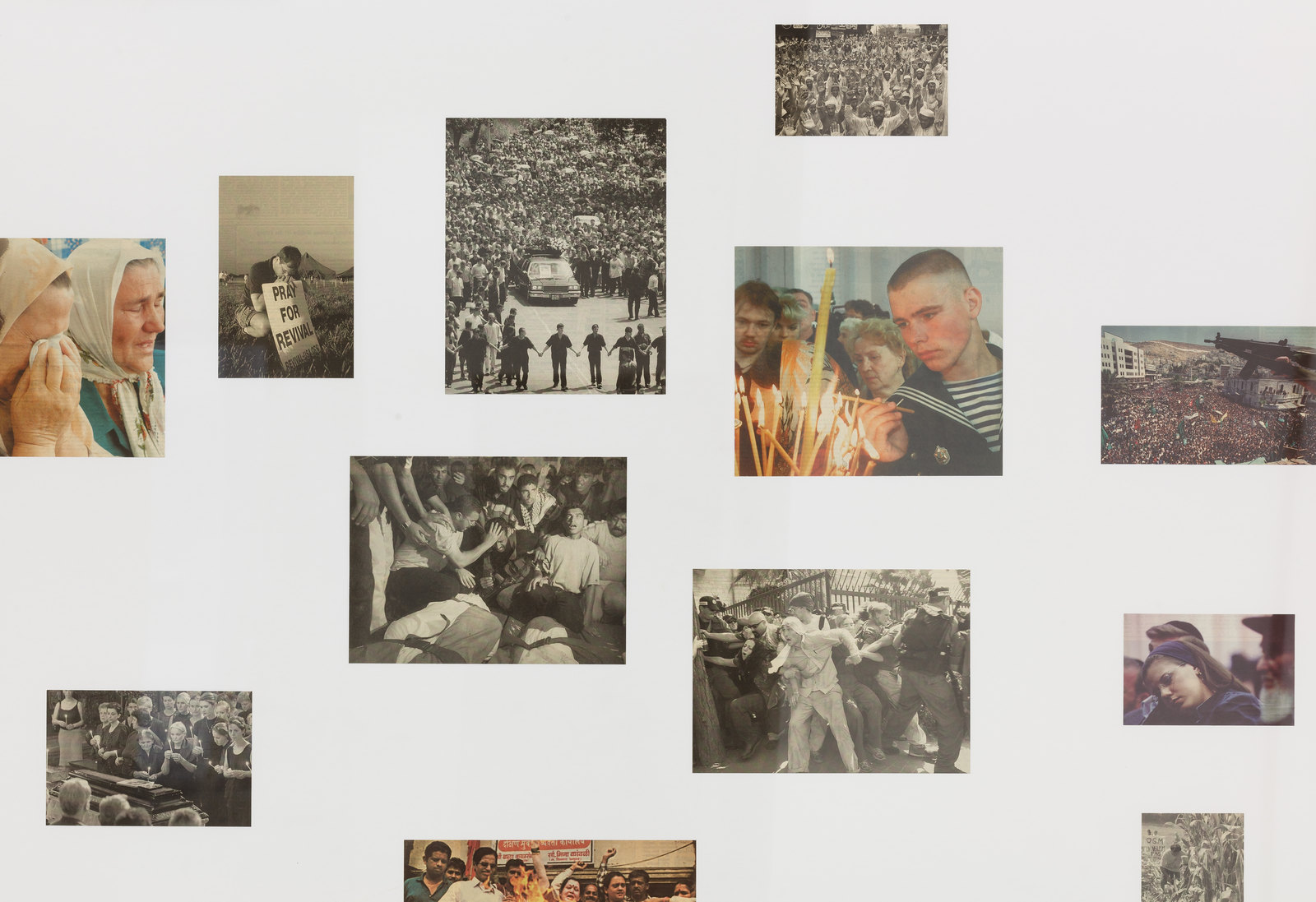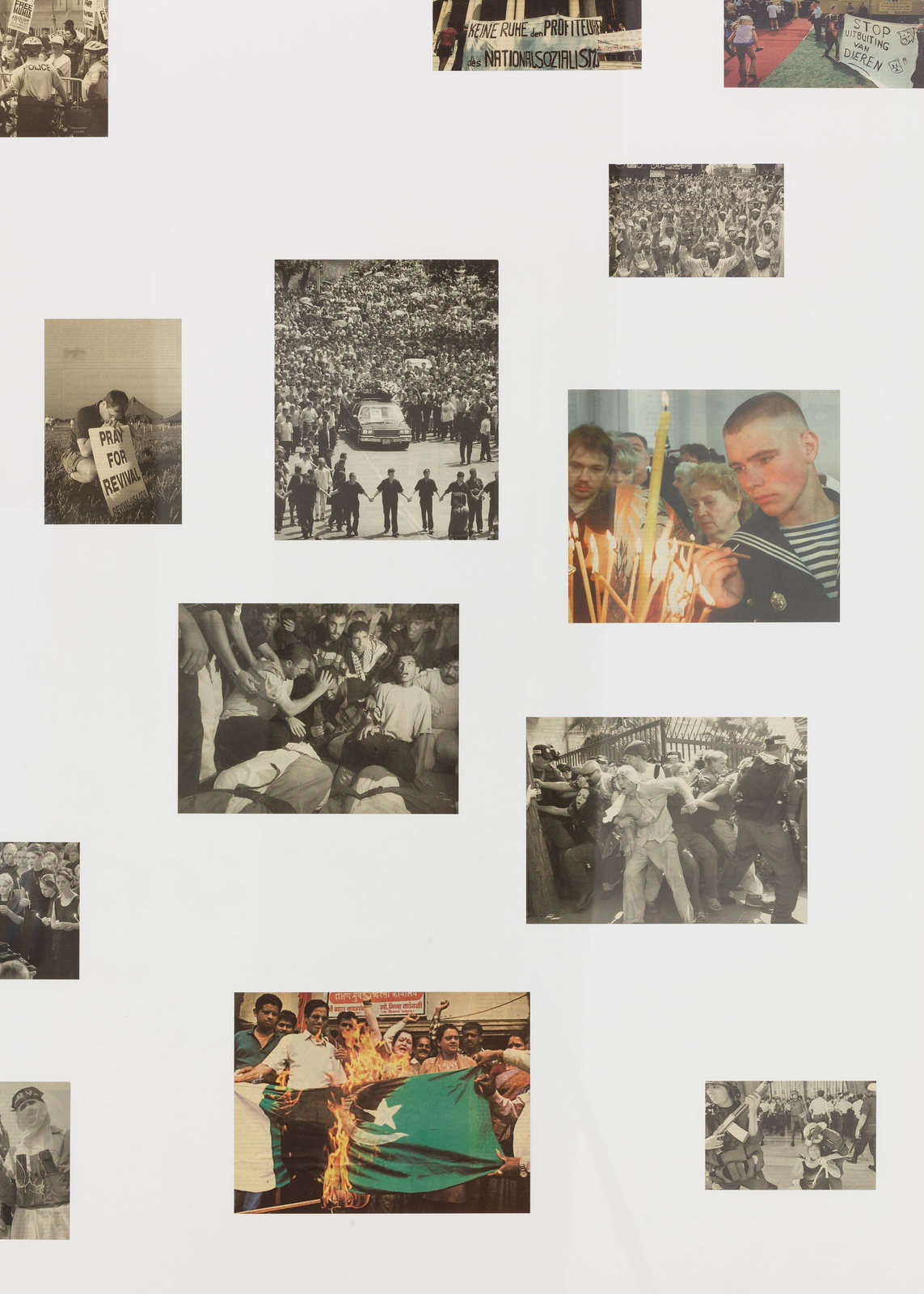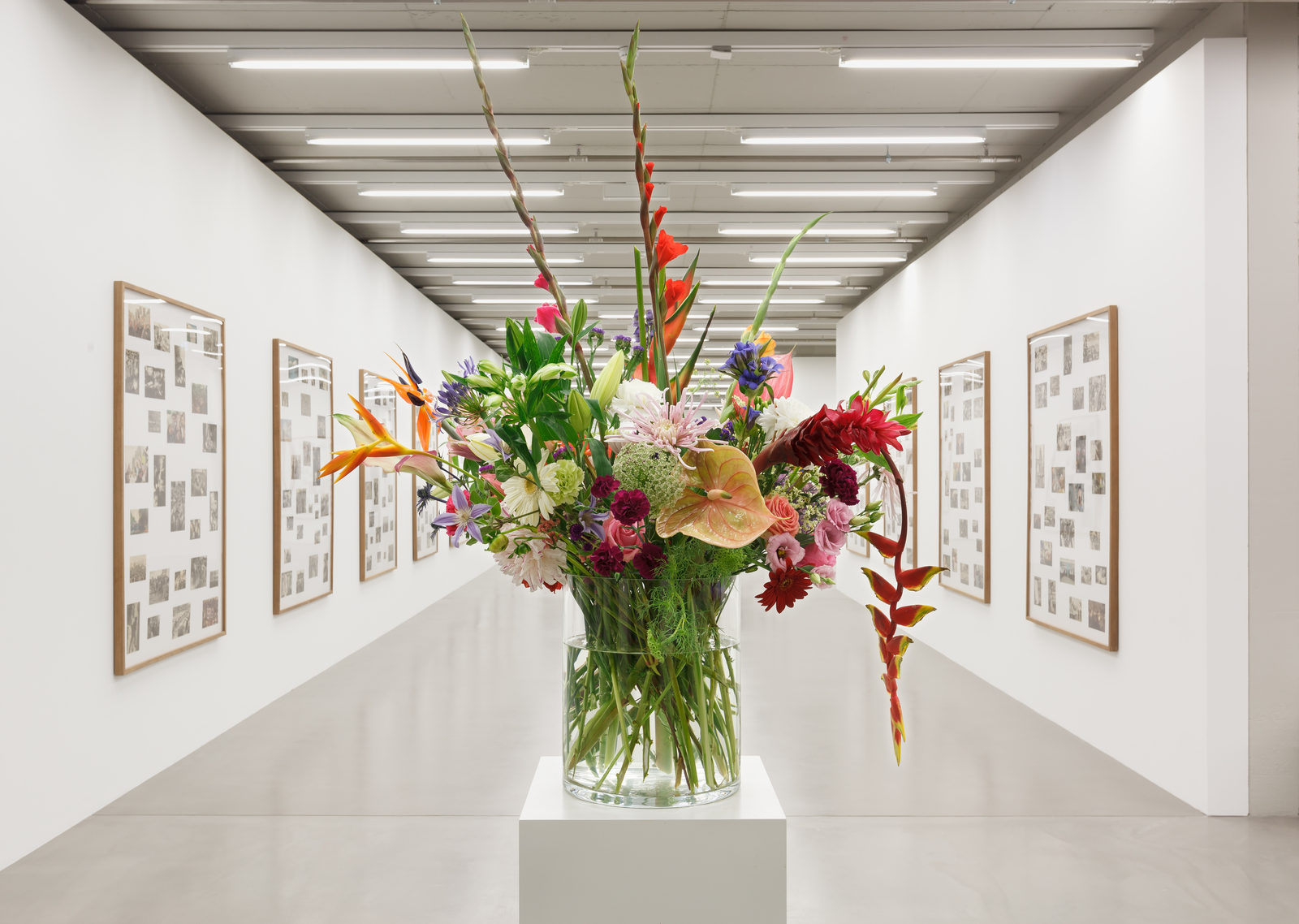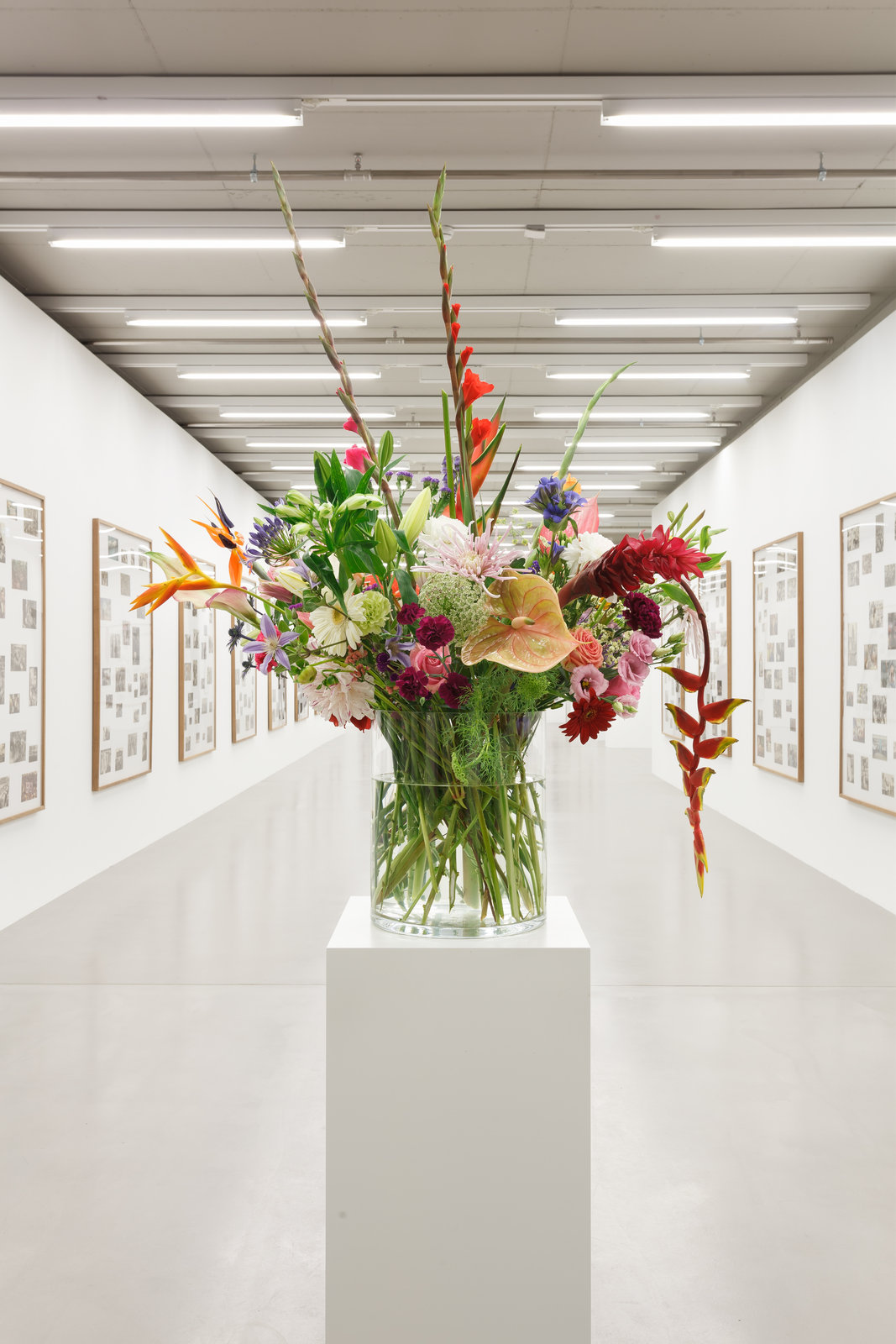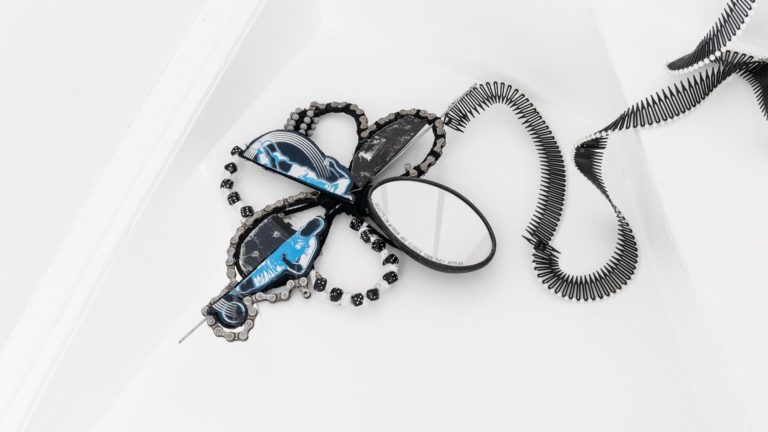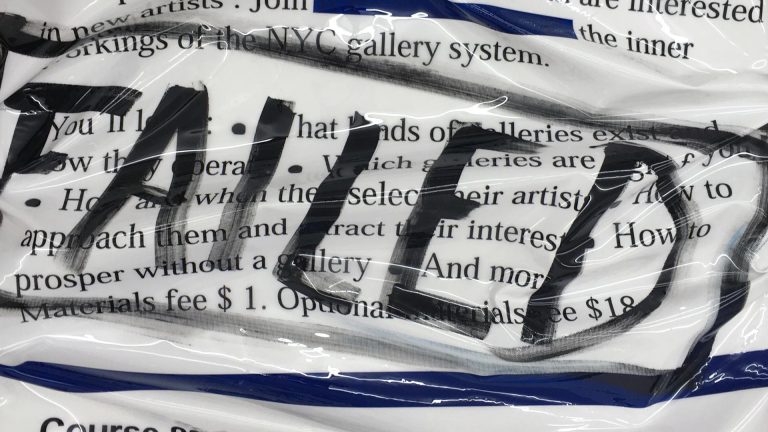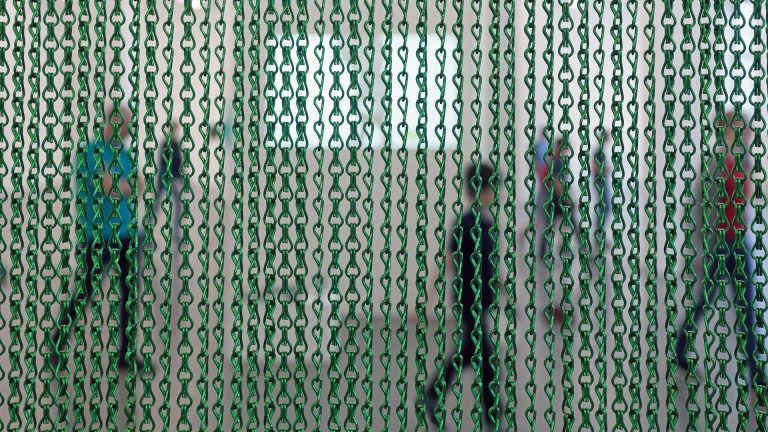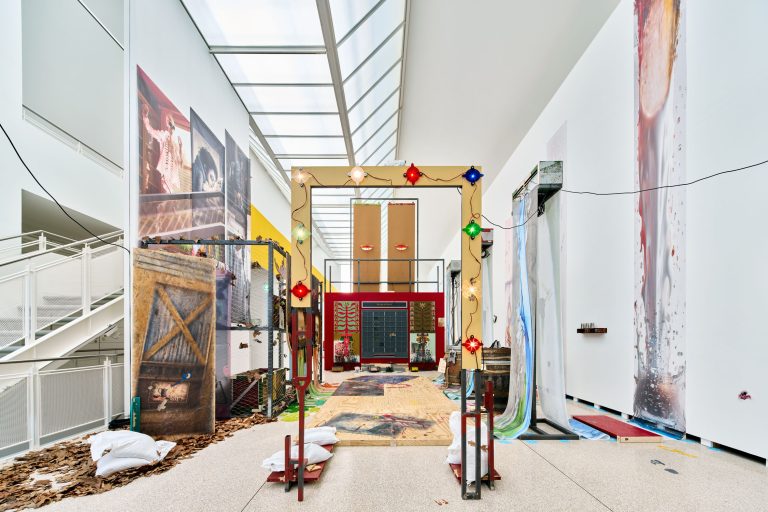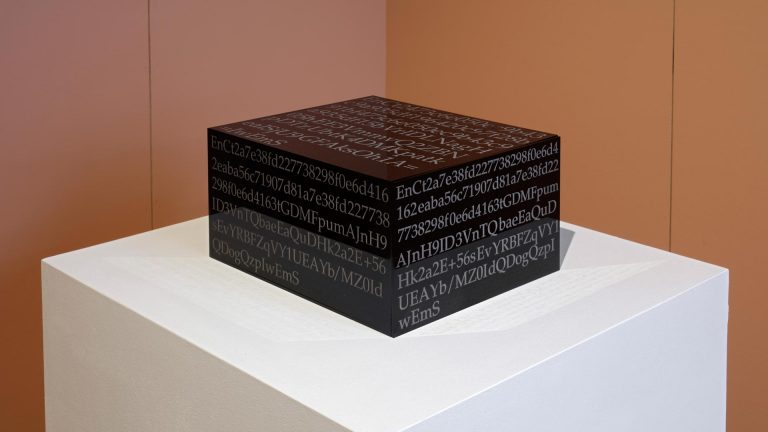Artist: Willem de Rooij
Exhibition title: Entitled
Curated by: Klaus Görner
Venue: MMK Frankfurt am Main, Frankfurt am Main, Germany
Date: October 14, 2016 – January 8, 2017
Photography: © Axel Schneider, all images copyright and courtesy of the artist, MMK Frankfurt am Main, Courtesy Privatsammlung, Frankfurt am Main, Sammlung Haubrok, Berlin, Friedrich Christian Flick Collection Hamburger Bahnhof, Berlin and Privatsammlung, Köln // Collection SYZ, Schweiz
The art of Willem de Rooij revolves around questions of representation and meaning. Since the early 1990s, the Dutch artist has been working in a range of media including installation, photography and film. For his exhibition “Entitled” at the MMK 2 of the MMK Museum für Moderne Kunst Frankfurt am Main, he has united works and workgroups ranging in date from the early phases of his career to the present in a new installation occupying the entire museum space for the first time.
“Willem de Rooij is represented in the MMK collection with important works from his cooperation with Jeroen de Rijke. We are delighted to have the opportunity offered by this exhibition to illuminate de Rooij’s oeuvre more intensively and more extensively”, comments MMK director Prof Dr Susanne Gaensheimer. De Rooij studied at the Gerrit Rietveld Academie and the Rijksakademie in Amsterdam. He has been a professor of fine arts at the Städelschule in Frankfurt since 2006. From 1995 to 2006 he collaborated with Jeroen de Rijke (1970–2006).
This exhibition focusses on both individual works by the artist and on their arrangement in a comprehensive installation developed especially for the rooms of the MMK 2. “Willem de Rooij considers the arrangement of the works in an overall installation an important part of what he does as an artist. The setting – whether private, public, institutional or social – is key. The spaces between the individual works and the views of the cityscape outside create relationships between work and viewer, museum and city”, explains Klaus Görner, the exhibition’s curator.
Through the deliberate incorporation of interim spaces and windows to the outside, the installation at the MMK 2 forges connections between the interior and the urban surroundings. The presentation is not designed as a sequence but rather as a cluster of different interpenetrating zones linked to one another by way of visual axes. The installation thus reveals cross-references within de Rooij’s oeuvre.
The show unites three core workgroups that can also be understood as systems, archives or collections: the group of weavings (system), the eighteen-part work Index (archive) and the Fong Leng-label sportswear (collection). These three workgroups are complemented by three Bouquets and three small cabinet presentations. In addition to the slide projection Orange, the cabinets feature works executed in conjunction with Bouquet IV and Orange, as well as early works by Willem de Rooij. Bouquet IV and Orange are both in the MMK collection.
Willem de Rooij has been producing the workgroup entitled weavings since 2009. The seven examples on view in the MMK show date from between 2011 and 2014. The handmade objects were woven in the “Henni Jaensch-Zeymer” workshop near Berlin. The works’ dimensions are based on the possibilities offered by the looms and the weaving techniques employed. The titles, developed by the artist from the context of the works’ making, often take the form of anagrams. De Rooij employs the structure of a weaving – the repetitive crossing of threads – to investigate concepts such as opposition, contrast, transition and nuance.
The eighteen-part installation Index likewise has its origins in a research interest of the artist’s. Willem de Rooij analysed the means pictures have of transporting social interests. The work comprises some five-hundred images of protest, mourning and commemoration which the artist cut out of international newspapers between January 2000 and July 2002. It reads like an archive of the social uprisings of those years. Yet it is also a study of formal decisions: how do the protesters want to be seen, what do photographers and editors make of that, and what can the newspaper reader extract from the images?
In retrospect, Index can be seen as a testament of the final phase of the print media and the beginning of a new era of the digital production and consumption of news. The eighteen panels of the work are on view en bloc at the centre of the MMK 2. The small newspaper cut-outs demand to be viewed at close range to enable the study of details. However, the captions from the newspapers’ fine print have been separated from the images themselves and made available in compiled form in a booklet. Index is on loan from a private Frankfurt collection.
The workgroup made up of “Fong Leng”-label sportswear goes back to Willem de Rooij’s own holdings: he has been collecting this apparel for more than ten years. The Sino-Dutch fashion designer Fong Leng (b. 1937) made a name for herself primarily in the 1970s Netherlands with her extravagant models for an exclusive clientele. From the mid-’80s to the mid-’90s, she democratized her production by designing sportswear that she then had manufactured in large numbers at lower cost. Her sportswear appealed to both ambitious, fashion-conscious middleclass consumers and football fans. At the same time, Fong Leng’s designs reveal her interest in cultural and “exotic” references, bearing testimony to the idea of multiculturalism prevalent in Dutch culture and politics at the time.
The show features a selection from Willem de Rooij’s collection of over two-hundred pieces. They are arranged in thematic groups based on formal criteria such as colour, pattern and material, but also on conceptual deliberations concerned with individual and collective, feminine and masculine. The presentation thus mirrors various social constellations.
Since 2002, de Rooij has designed sixteen flower arrangements all bearing the title Bouquet and a number. Each of these temporary sculptures is based on a brief description and a list of all of the flowers in the bouquet. Another thing they have in common is that they actually don’t exist when they are not on exhibit. Like a film or slide projection, these works are distinguished by their ability to be absent. When on display, the flowers in a Bouquet are replaced regularly so that the arrangement always looks fresh. The Bouquets also emerged against the economic background of the Dutch wholesale markets that turn over millions of flowers from all over the world every day, regardless of the season.
Willem de Rooij, Index: Riots, Protest, Mourning and Commemoration (as represented in newspapers January 2000-July 2002), 2003
Willem de Rooij, Index: Riots, Protest, Mourning and Commemoration (as represented in newspapers January 2000-July 2002), 2003 (detail)
Willem de Rooij, Index: Riots, Protest, Mourning and Commemoration (as represented in newspapers January 2000-July 2002), 2003 (detail)
Willem de Rooij, Bouquet V, 2010
Willem de Rooij, Bouquet V, 2010
Willem de Rooij, Bouquet IX, 2012
Willem de Rooij, Bouquet IV, 2005
Jeroen de Rijke and Willem de Rooij, Bouquet IV, 2005
Willem de Rooij, Fong Leng Sportswear, ca. 1985-1995
Willem de Rooij, Fong Leng Sportswear, ca. 1985-1995
Willem de Rooij, Fong Leng Sportswear, ca. 1985-1995
Willem de Rooij, Fong Leng Sportswear, ca. 1985-1995
Willem de Rooij, Fong Leng Sportswear, ca. 1985-1995
Willem de Rooij, Fong Leng Sportswear, ca. 1985-1995
Willem de Rooij, Fong Leng Sportswear, ca. 1985-1995
Willem de Rooij, Fong Leng Sportswear, ca. 1985-1995
Willem de Rooij, Zen Chyme in her Jeans, 2011; Untitled for now (Pink), 2012
Willem de Rooij, Taping Precognitive Tribes, 2012



